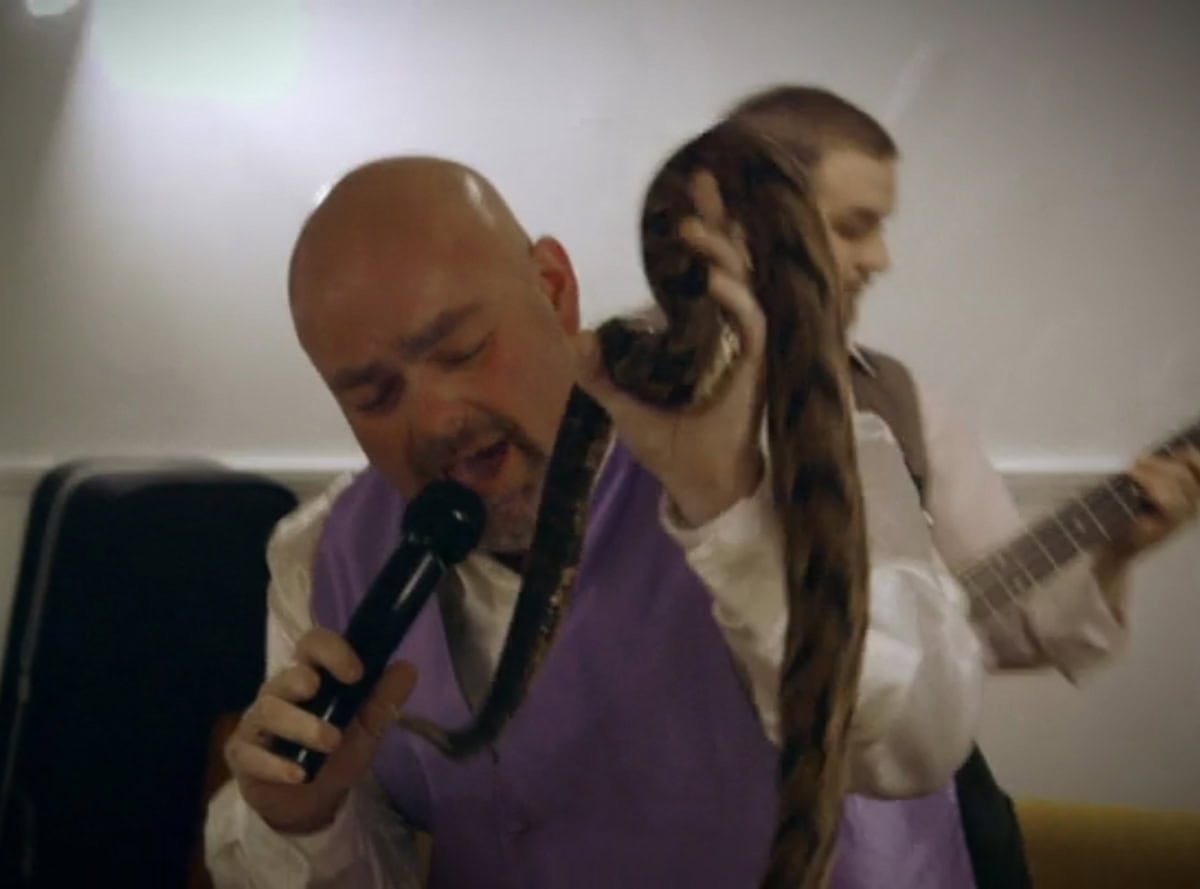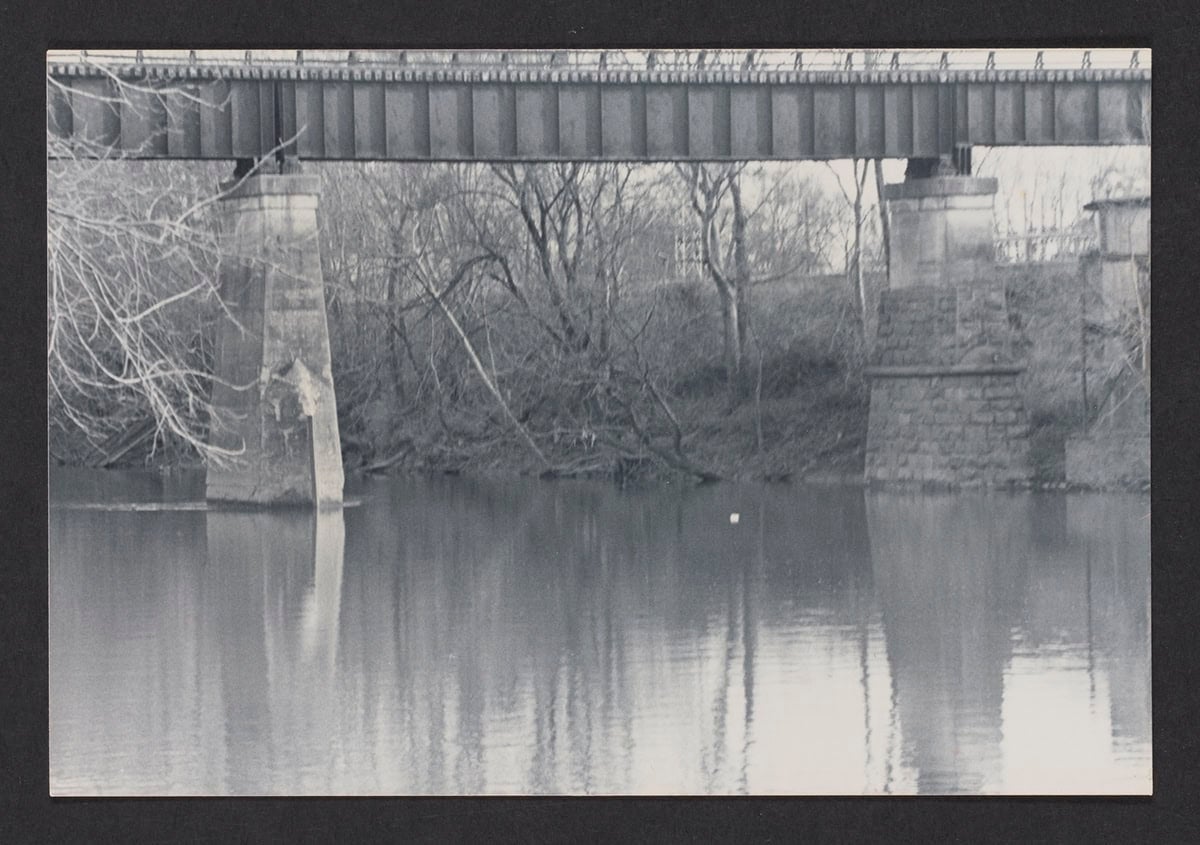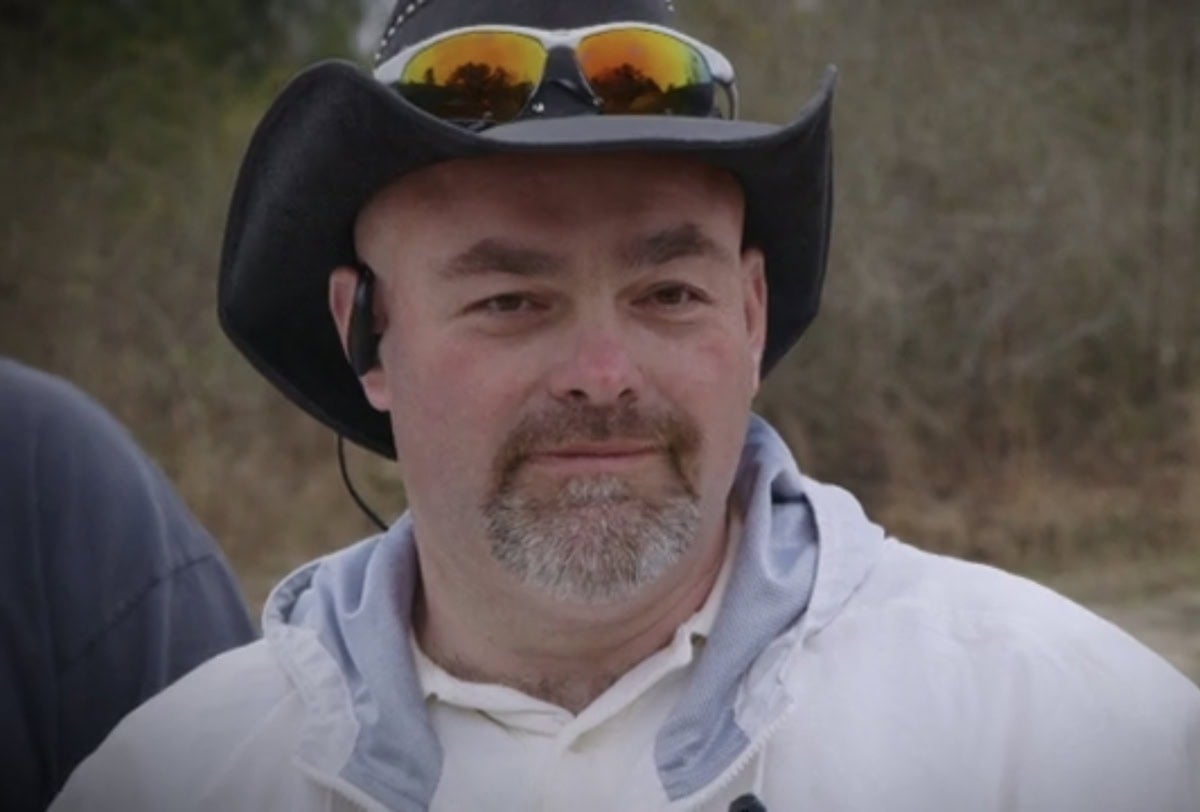
It is undeniable that some things are crazy and are outside of our control. It is equally undeniable that some things are crazy and are entirely within our control. The undeniable – no matter how much it is questioned, doubted, ridiculed, qualified, or dismissed– remains in full view. Some things are crazy and within our control without our control or permission–– and depending on whom you ask and how honest they’re being, this too is undeniable.
Another way to address the undeniable is that there’s the factual: things that happen because of other things that happen, and the faithful: things that can, will, or already have happened because things have or eventually will happen. Merriam Webster defines faithful as both “steadfast in affection or allegiance” and “firm in adherence to promises or in observance of duty” and both are right as well. In 1980, the artist Beverly Buchannan filled a white cardboard box with chalk and sent it down the Ocmulgee River in Macon, Georgia. Titled Chalk in a Box, the work exists today as a series of black and white photographs documenting the box’s travel down the river and the photographer and Buchannan’s attempt to follow it. The portfolio ends with an image of Buchannan at the shore with the river behind her holding a camera herself, the final status of the box unconfirmed. Sometimes faith is fact and if they are both strands of the same thread, many things for instance, the fate of Beverely’s box and the life and death of Pastor Jamie Coots remain – knotted.
On February 15th, 2014, in Middlesboro, southwest Kentucky, the sun rose at 7:24AM, set at 6:18pm and around 8:15-8:30pm Pentecostal pastor Jamie Coots was bitten by a snake during a service at The Full Gospel Tabernacle in Jesus Name church and died shortly after. The temperature was a high of 41f degrees and a low of 27f, and the weather reports of that day detail conditions in the sky shifting from cloudy, to mostly cloudy, to fair and then cloudy once again. Since the premier of Snake Salvation – the National Geographic reality show starring Jaime Coots and his fellow snake-handling pastor Andrew Hamblin– and Coots’ death five months later, much has been speculated, theorized, and criticized about the practice of American snake handling, but these are the facts.
It was winter and it was night and Pastor Jamie Coots, born Gregory James in 1971, was giving a sermon to his church, founded by his grandfather Pastor Tommy Coots in 1978. Compelled and moved on by the Holy Spirit, a tenet of Pentecostal tradition, Coots began handling three snakes ( out of the thirty he kept within vitrines in a shed behind his house) and one of these, a black Timber Rattler, bit him. It was not the first time he was bitten during service but it was his last. After being bitten on his right hand, Coots vomited, lost consciousness, returned to his home and died two hours later with his family resisting medical treatment on his behalf, as they’ve done in the past.
Between the faithful and the factual an undeniable unifier is risk. As Beverly Buchanan was aware of the destructive capabilities of water on chalk, Pentecostal serpent-handlers are aware of the the toxicity of the serpents they handle, with common distinction of “serpents” as venomous snakes. Distributed through their fangs, this venom like the minerals, currents, wildlife and unpredictability of the Ocmulgee River are the point. Faith is undeniable when a member of the congregation lifts a poisonous snake with ungloved hands ( other practices performed within the church: fire work (handling live flames) and swallowing of poisonous chemicals such as strychnine) as it is when sending sculptures down the river and planning on photographing it wherever it may go. In the Bible, despite God’s warning Eve eats the fruit of the Tree of Knowledge and her and Adam are expelled. The fact remains –there is always a risk, even if the loss or gain is too close or far away to see fully for a very long time, if ever.

Similarly to the churches that practice serpent handling, populations of Timber Rattlers are mostly distributed throughout the eastern half of the United States, particularly within Appalachia. Also known as American vipers, canebrakes, and banded rattlesnakes, Timber Rattlers have been recorded at lengths up to seven feet, give live birth once every three years, and typical habitats include swamps, river floodplains, forests and mountains. And like other things, temptations, ideas, criticisms, biases in the Wild Timber Rattlers, are classified as ambush predators: catching their prey by laying hidden, shaded by brush until quickly striking and injecting their prey with venom. The exact toxicity of their venom varies depending on region and available diet. Due to their size, long fangs and high venom yield, Timber Rattlers join Copperheads, Cottonmouths and Coral Snakes among the most dangerous across North America, and the most common serpents handled by the church. Just as faith and fact coexist side by side, so do people, their environments, and their beliefs. Familiarity is an invisible bias and perhaps some find the ability of snakes to leave their skin behind miraculous because as humans and believers we still find it impossible to do it ourselves.
In October 2013, four months before he died, Coots published an op-ed in the Wall Street Journal entitled “The Constitution Protects My Snake Handling”. As the name suggests, the piece discusses why serpent handling is no different than any other religious practice worthy of the first amendment’s freedom of religion. Stating “as members of a small and unpopular religious minority, congregants of serpent-handling churches are precisely the sort of worshipers that the Constitution was designed to protect.” Although practiced for more than a century in churches from Southwestern New York to northern Alabama, serpent handling publicly is illegal in every state except for West Virginia. Beyond physical harm, the risks are legal and financial: in 2008 due to his arrest for transporting snakes, legally purchased in Alabama through Tennessee, Jamie was fined $6,400.
At its core, belief is a gamble and a risk. In an essay titled “Faith, Play, and the Death of Jamie Coots”, behavioral psychologist Gordon M. Burghart, classifies serpent-handling as “risky play”, writing “I am not interested in the fact that the snake handling tradition is based on a literal interpretation of the end of the Gospel of Mark that virtually all Christians reject. Rather, it highlights recognizing that faith, indeed life itself, is serious play, the ultimate game.”And if life is a game, with serpent-handling is an example where the stakes couldn’t possibly be higher. There are losses. The loss of Jamie Coots was the loss of a community herald, part time bus driver, pastor, husband, and father of two.
One can lament that Eve’s infidelity (abandonment) of God’s principles and God’s retaliation (expulsion) was the severing of a tie. A loss on both sides and the worst breakup in history. The end to a relationship being mourned throughout centuries. For humanity the loss of Eden’s virtues was the loss of an immediate dominion to nature. For God, the absence of Adam and Eve was the loss of the intimacy of creation. Where once God appeared so clearly to these people – and them to Him, was now guesswork – illusions, glimpses where once there was vision, after Eden there was doubt on both sides.

Jamie Coots, a third-generation snake-handler preached in the same church his grandfather founded in the seventies. Four years after his own father’s death: Cody Coots, Jamie’s son, was also bitten by a snake while preaching.
Familiarity is a darkness of its own. Sometimes we can only see the trees as a threat when the wind blows, and once the storm passes, we resume its designation as landscape. The tree is the shade you knew and if everything is slanted then nothing is. Just as reporters wielding fact can’t help but shame the faithful, those who pick up poisonous snakes can’t help but see faith as fact. You can’t choose who you fall in love with, and Coots and his congregation fell in love with a means of finding their way towards God that compels them towards risk.
Scientific facts of the world: dinosaurs, natural selection, light’s ability to function as both a particle and a wave, are arrived by way of speculation. Another version of Genesis 3 places God’s ability of omniscience into question, with God only aware of their tasting of the forbidden fruit when he calls for Adam and Adam, now knowledgeable of his own nudity, is embarrassed and hides. Like us, this God is only capable of knowing through inference. This is only speculation, but with Adam and Eve now outside the Garden and the certainty of his gaze, God’s vision of humanity may have lost focus. As they walked further away, they blurred. The lines distinguishing faces softened as more begot more begot more and the scenery of his creations shape-shifted and hardened without Him. For Eve and Adam life outside the Garden was difficult too. Outside the immediate proximity of God, Adam, who once understood God’s words before he understood his own ideas, God’s ideals – still a fixture on the horizon, deteriorated through their rear view as though himself and Eve were on a motorboat and It, God’s Real Voice, remained anchored near the shore. Mandate, suggestion, ideal, notion, speculation, going, going, going, gone. So much so that maybe this God and Humanity aren’t entirely certain of the other’s existence. While Adam puzzles whether or not he believes in God, for all we know God may be elsewhere wondering aloud, if there ever really was an Adam.
Whether to the unknown, undeniable, or unanimous, submission and speculation are unifying tenants of understanding. On earth we feel, grapple and reconcile with gravity every day and through utilizing its position as an absolute truth, are able to engineer and ascertain truths of forces, distant planets, and systems that would’ve otherwise remained incalculable. As a practice derived from a literal interpretation of the Bible (in which a speaker encourages followers of Christ to “take up serpents” as a demonstration of faith), serpent handling is another great example. By surrendering to one truth, in this case the fundamental legality of biblical text, and judging and operating accordingly, faith is once again presented in equal relation to fact. Bitten by venomous snakes ten times throughout his life and losing a finger to one in the early nineties, Jamie Coots understood their relationship first-hand. By leaving Adam unimaginative and crafting Eve corruptible and placing a serpent within her path, God was serpent handling before anyone else.
What they either don’t tell you or forget to mention is that most people die suffering believing in something (even if it’s in death itself) which makes more people martyrs than ever considered before. A possible advantage of doing it the serpent-handler way is the uncovering of another undeniable truth. Between faith and fact, logic and loyalty, the dark of the cave and the possibility of salvation, being drowned by the creek or dissolved by the river, God’s decision to either intervene or abstain and Eve’s decision to choose the serpent or God, etc. at the end there remains an essential core. The secret ecstasy of finding yourself between a rock and a hard place is that at least you know where you stand.
On a walk this summer I saw a group of children running on the sidewalk. The oldest and furthest behind yelled to the girl furthest ahead. “Sis, stop! Why are you running?”
And the girl said back, “Because It feels good!’
The girl in the back, gave up, stopped running and yelled “Please don’t go. I can’t do this without you.”
If God had spoken to Eve this way, or Eve to God, one could argue we wouldn’t be in this mess in the first place. And by mess I mean, in the dark hands out, feeling our way around, risking.
Because one is ahead and the other behind, faith is the energy we use close the distance. To catch up, to not be alone, to stop running altogether.

This essay is part of Burnaway’s yearlong series Belief and Fiction.
This essay originally appears in the 2021 Burnaway Reader, Treasure. Purchase your copy from our webstore.




